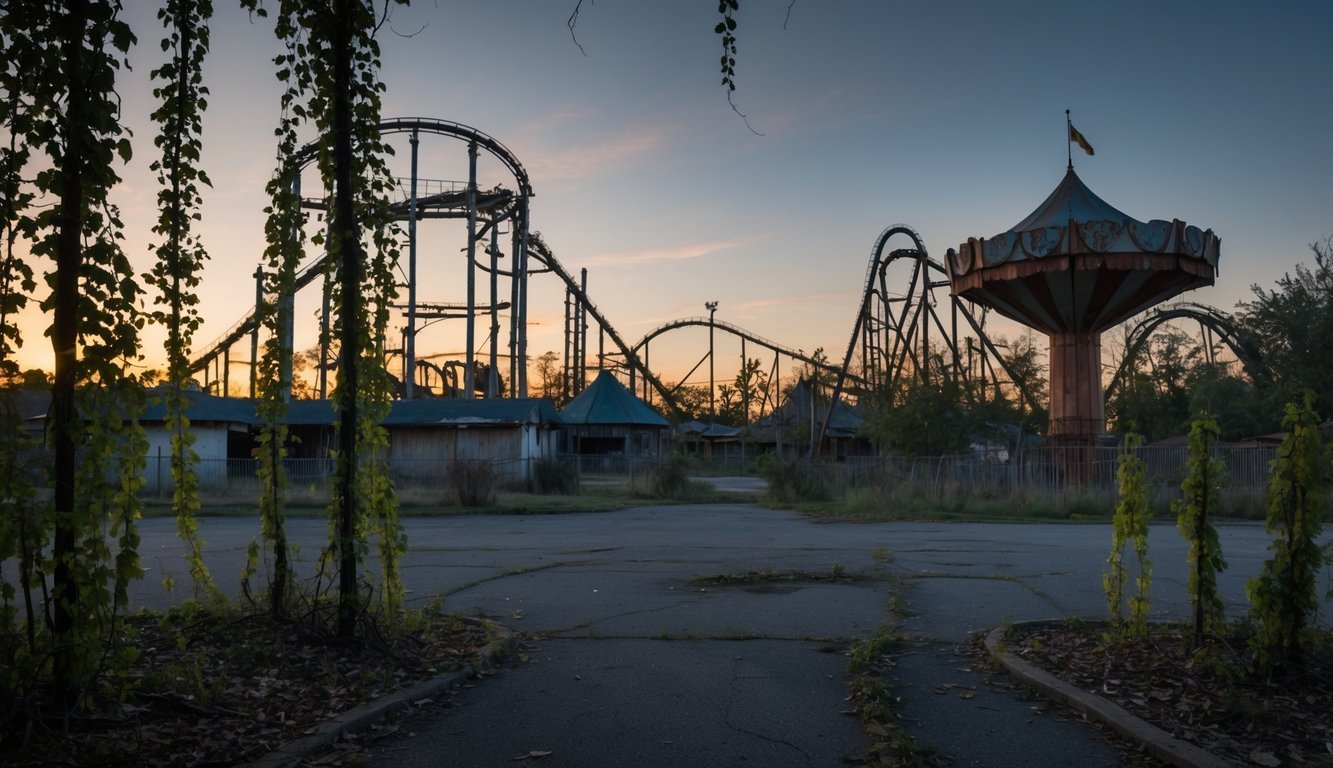At first glance, Crow Country seems to delve into the theme of nostalgia, invoking the eerie atmosphere of Resident Evil with its theme park setting laden with mental challenges and grotesque, human-like figures.
It also points to the playful yet simplistic aesthetics of Final Fantasy VII, where characters resemble blocky toys akin to Playmobil.
However, the game transcends simple reminiscence, revealing the disquieting roots of our modern obsession with nostalgia.
The Haunted Park
The story revolves around Mara Forest, who recalls a traumatic childhood visit to the namesake theme park.
A cryptic stranger interrupted her day of youthful joy, leaving her with a bite that triggers a terminal illness, gradually consuming her life.
When she decides to return to the park, she is not merely seeking closure but also answers, determined to ensure the past does not repeat itself.
The once joyful venue has morphed into a haunting landscape, marked by echoes of loss and decay.
Designed with children in mind, the park boasts whimsical attractions rather than adrenaline trails, filled with spooky elements like graveyard figures, twisting mazes, and fairy-tale reenactments.
This creates a spellbinding atmosphere that dances between curiosity and eeriness.
The so-called “Haunted Hilltop” exudes a more festive vibe than genuine fear.
Yet, without the lively interactions of families, the ambiance shifts into something unsettling.
While the genre of horror often finds its home in theme parks, Crow Country uniquely intertwines childhood innocence with sinister undertones throughout its gameplay.
The Underbelly of Nostalgia
In contrast to many horror games that employ fixed camera angles, Crow Country offers an innovative perspective—it presents each area as a miniature diorama, akin to a dollhouse, inviting players to peek inside.
For a moment, players can become engrossed in the minutiae of each room, interacting with small objects and unraveling puzzles.
This design choice instills a sense of confinement, mirroring the park’s layout.
Each area, while connected, feels like a carefully crafted microcosm observed through a constrained viewpoint.
As Mara traverses the seemingly vast park, she uncovers secret corridors and hidden spaces that lie beneath the surface.
Her journey takes her beyond the fun rides to explore backstage areas and administrative zones, ultimately leading her into the heart of the park’s concealed mining operations—a chaotic maze of metal structures and seemingly bottomless pits.
Much like the iconic homes found in Resident Evil, Crow Country reveals an industrial underbelly lurking beneath its whimsical facade.
In these depths, players encounter “roots”—massive, tentacle-like formations made up of precious minerals that park owner Edward Crow has been surreptitiously extracting.
As the narrative unfolds, it becomes clear that the park is increasingly infected with monstrous beings and traps, starkly contrasting its original vibrancy.
This contrast—from the bright surface reality to the dark abyss below—mirrors the story’s progression, uncovering hidden truths.
During a childhood trip with his father, Edward Crow first discovers these roots.
However, as an adult, he chooses to exploit them, crafting an elaborate falsehood about a mining operation in Brazil.
As he digs deeper, monstrous entities—mutated humans altered by his mining activities—emerge, reaching out with tainted touches, symbolizing a society facing environmental ruin and collapse.
Despite acknowledging the grave dangers, Edward prioritizes profit above all else.
A Duality of Memory
Intriguingly, Edward shows a strange reverence for the portal, referring to the emerging entities as “guests,” likening their presence to a visit to his park.
In a paradoxical act, he builds a shrine to honor the roots while simultaneously abandoning the very beings he exploits.
This duality highlights his obsession with his own history while ignoring the ramifications for others.
Crow Country poignantly mirrors pressing cultural critiques on exploitation.
Its narrative parallels contemporary conversations about how billionaires profit off resource extraction in protected lands, reminiscent of themes present in the novel Birnam Wood.
The stark reality of a wealthy individual mining in Brazil contrasts sharply against the true impact of such actions in local contexts, shedding light on the hidden violence that often accompanies economic gain.
Additionally, connections abound with Alan Moore’s short story “Illuminations,” where a man’s unsettling return to a childhood vacation spot spirals into horror as he realizes he’s reliving the past.
This narrative transforms nostalgia into a profound terror, emphasizing the challenges of reconciling cherished memories with adult realities.
Crow Country fosters a dialogue between economic exploitation and a longing for a more innocent past.
On one hand, Edward Crow engages in ruthless endeavors; on the other hand, the entities seek to reclaim lost nostalgia.
Their journey stands in stark contrast to Edward’s romanticized fixation on the past, risking the stability of the future.
The park’s most concealed area—a futuristic section that remains unrealized—serves as a metaphor for the uncertainty ahead, where those aware of impending crises find themselves voiceless.
An interesting note is that Crow Country was initially titled Condor Country, reflecting its indigenous roots.
This name change signifies a loss of identity, spotlighting the often-violent erasures that characterize nostalgic memory.
In summary, while Crow Country may not revolutionize the horror genre, it envelops players with a warmth reminiscent of a beloved VHS tape.
Yet, its layered examination of nostalgia adds depth, transforming it into a rich and intricate exploration.
It captures the fragile balance of remembrance against the weight of history, illuminating vital truths for any narrative that seeks to intertwine past experiences with aspirations for the future.
Source: GameSpot


